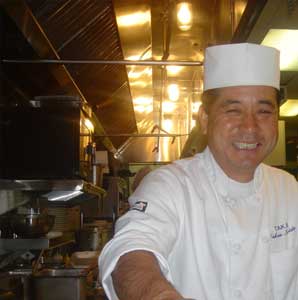Menu

Middle Sized Kitchens
MIDDLE SIZED KITCHENS
Middle sized kitchens are available in locations such as restaurants, cafeterias and hotels. Ovens, stoves and frying machines are the main equipment used in the middle sized kitchens. Also, kitchen sink and and washing machines are among the main odor, humidity and heat sources.
It does not enough to remove extracted air to outside for middle sized kitchens, they are also supplied with fresh incoming air. Otherwise, great pressure differences and undesirable air movements occur between the adjoining areas of kitchen and outer environment. Generation of negative pressure method by means of extracting much more air than make up air in the kitchens is no longer exist. Thus, no extraction air from adjoining areas such as dining hall is vented to the kitchen area.
The fresh air supplied to kitchen is heated in the station up to the ambient temperature. Kitchen temperature control is done according to amount of ventilation in summer time. For better type of applications, air handling unit is preferred and air is cooled down. The filter to be used in fresh air handling unit shall have minimum EU 3 quality. Air ducts should be easy to clean made of galvanized sheet in round shape. Similarly exhaust ducts are made of galvanized sheet with round form. Exhaust ducts should be sealed properly. It is not allowable to leak grease or fume from the ducts. The length of horizontal exhaust ducts should be short as much as possible and also they should be curved accordingly. The backward curve rate should be 1% at least.
Fire damper is not prerequisite if ducts are equipped with cleaning cover. Exhaust ducts should be fire resistant. Minimum air speed should be 7,5 m/s. Air speed can reach up to 12 m/s. Duct dimensions should be determined between these speed limits. There should be no component functioning as grease trap through the duct. Because the said point also poses a fire risk. Suction nozzles in the kitchen areas should be equipped with filters. Exhaust fan should be capable of carrying the hot and greasy air. Fan motor should be positioned away from the air flow area where it can be cooled down satisfactorily.
Accumulated and condensed grease should be safely drained from the fans fixed to the ceiling without resulting in any dirt or discoloration on the ceiling. Exhaust fans are backward curved centrifugal fans. Not only special design roof type fans but also fan sets to be positioned on a platform may be preferred. Exhaust air should be discharged to outside from the highest point of roof at the speed of 10-13 m/s. Thus, the occupants of adjoining buildings are not disturbed. Wind direction is also another important point of matter. Exhaust ducts passing through the cold and unheated areas should be insulated against condensation.
Source of pictures and articles: Studies of Isisan Academy no:305
Air conditioning manual, updated 3rd edition

